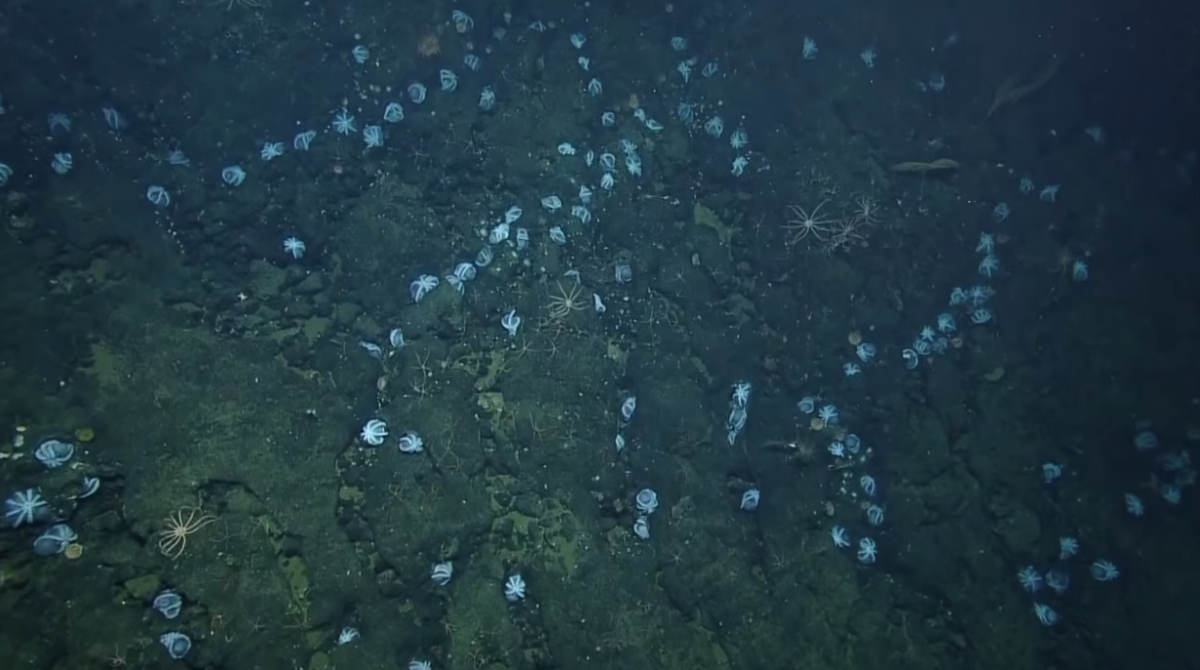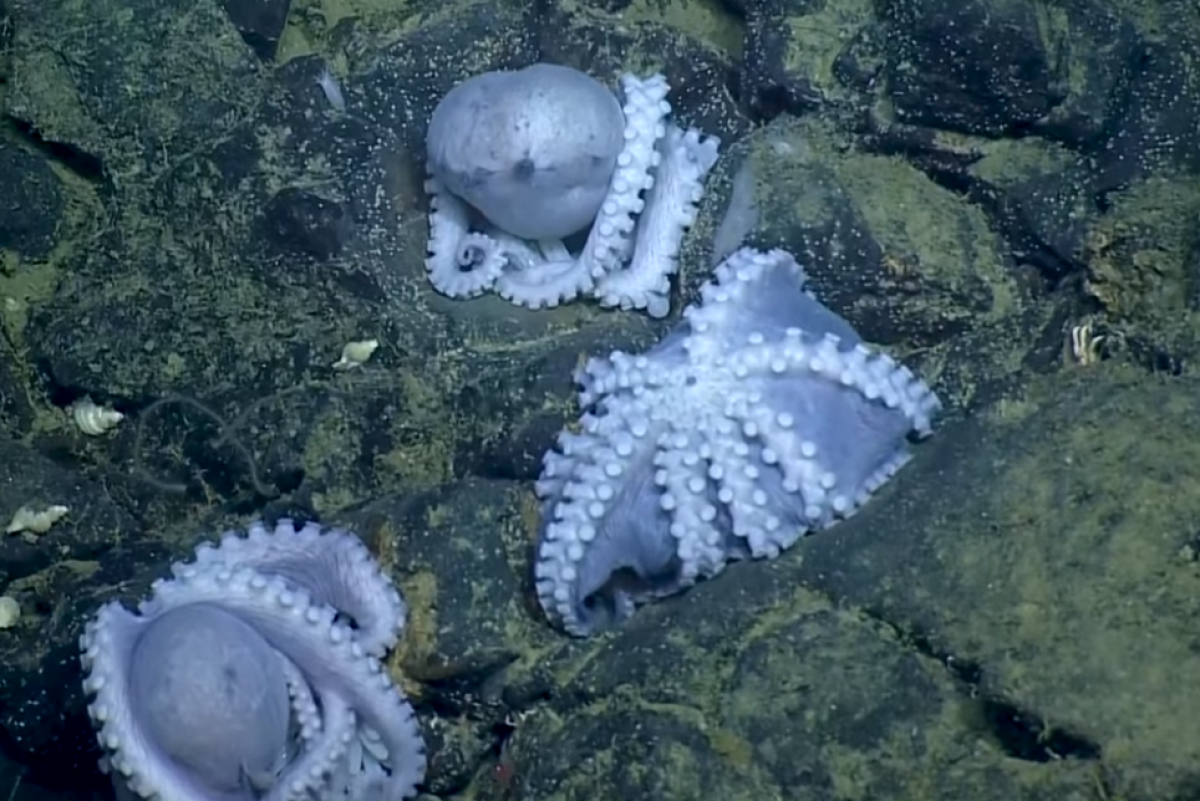If last week's incredible footage of a Dumbo octopus wasn't enough to satisfy your cephalopod fancies, researchers exploring the depths of California's Monterey Bay have discovered an enormous octopus nursery.
Some 1,000 creatures were lying on the craggy seabed almost 10,500 feet below the surface. The largest discovery of its kind, many appeared to be inverted around eggs and even embryos in footage that was streamed live online.
Rows and rows of the eight-legged Muusoctopus robustus lay splayed among the rocks of the Southeast Davidson Seamount. "There's like three rivers flowing into this one here—three rivers of octopus," one crew member is heard saying in the video. "You can see lines of octopuses snaking up this formation of volcanic rock," she added.
"We went down the eastern flank of this small hill, and that's when—boom—we just started seeing pockets of dozens here, dozens there, dozens everywhere," Chad King, chief scientist on the Exploration Vessel Nautilus told National Geographic.
The scientists even spotted a weird shimmer in the fluid around some of the octopuses—"kind of like an oasis or a heat wave off the pavement," King said. This indicates the octopus may be gathering around warm water seeping from the rocky seamount.

Just one other octopus nursery of this kind of scale is known, NUI Galway research and octopus expert Louise Allcock told Newsweek. "That was on Dorado Outcrop: An area of exposed basalt on the eastern flank of the East Pacific Rise with a low temperature hydrothermal system."
Researchers counted 606 critters at Dorado Outcrop, also Muusoctopus species, mostly in similar brooding positions, Allcock said. "We don't know much about Muusoctopus breeding, but given most octopuses like to lay their eggs on rocky outcrops, and the number of these in the deep-sea is limited, it's not altogether surprising that there are 'brooding grounds'," she said. "Probably we will see more sites like this the more we explore these habitats."
This latest footage, she added, was "amazing."

The Nautilus is probing the deep seas off the coasts of the U.S., British Columbia and Hawaii. The last pitstop on this literal voyage of discovery will be the submerged shorelines of the California Borderland. So far on its journey, it's already filmed weird creatures like the gulper eel and may have even helped NASA find space rocks lurking deep underwater.
Uncommon Knowledge
Newsweek is committed to challenging conventional wisdom and finding connections in the search for common ground.
Newsweek is committed to challenging conventional wisdom and finding connections in the search for common ground.
About the writer
Katherine Hignett is a reporter based in London. She currently covers current affairs, health and science. Prior to joining Newsweek ... Read more
To read how Newsweek uses AI as a newsroom tool, Click here.








